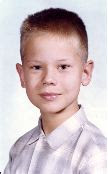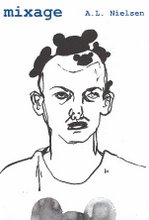Q. How would you teach the poetry of Nathaniel Mackey? What does a reader need to know?
“All art is sensual . . . Listen to it! Let it come to you.”
These were the opening words of William Carlos Williams as he began a reading at Harvard University in 1951. He was trying to get something across to his audience about the reputedly difficult modern poem, something that, even after decades of Hip Hop and Spoken Word poetry, may not be immediately apparent to some students, to some readers in the general public. The Moderns may have, following Whitman, supplemented the traditional lyric forms with a host of experiments running from vers libre to the concrete, but the music had never been left behind. Williams himself composed poetry both for its appearance on the page and for its aural modalities. That well wrought wheel barrow, for instance, sounded different in his performance of the piece than you might have expected looking at it on the page. He’d spent uncounted hours rearranging the words on the paper till he hit upon the particular syllabic count and arrangement we all know, but he would read the poem out aloud as if there were no line breaks in the thing at all. The poem had multiple manifestations, but in each the emphasis was upon its materiality. If a poem is a machine made of words, as he had it, it’s a noise machine. If anything, the creators of supposedly free verse forms were yet more intent upon the forming of the poem as a material, shaped, aural thing.
And that is how we need to bring our students to the poem. Ethelbert Miller will recall a song everybody in our generation sang along with on the radio, a record by Otis Redding, one that went by the title “Fa Fa Fa Fa Fa.” [This interest in sheer sound was nothing new to Otis. Back in 1961 he released "Shout Bamalama."] The record company felt obliged, like the editors of Norton Editions, to append some clarifying note, so the label included the subtitle “(sad song),” though the song wasn’t especially sad sounding. The first two lines of the song go:
Fa Fa Fa Fa Fa Fa Fa Fa Fa
Fa Fa Fa Fa Fa Fa Fa Fa
Yes, the meter demands one less “Fa” in the second line; that’s crucial.
"FA FA FA FA FA FA FA FA FA" Live in Europe
This was so well known at the time that in the song “Do You Like Good Music,” during which Arthur Conley paid tribute to each soul music great of the era in turn, when it comes time to represent Otis, Conley sings “Fa Fa Fa Fa Fa Fa Fa Fa Fa,” the first line of Redding’s tune.
Do You Like Good Music?
Conley’s song gets a name check in a poem by C.S. Giscombe, in “Afro-Prairie”:
Tempting for the voice to locate its noise, to speak of or from. Everybody wants to be the singer but here’s the continent.
Fielding the question, Do you like good music?
And you’d be right to hear in there an allusion to the ideal of “field composition,” something painters shared with poets in the years of Giscombe’s childhood, and mine. (What was it about 1950?!?!)
Giscombe’s “Afro-Prairie” is prose poetry, but it calls to us for a hearing. Listen to it. Where countless writing teachers have counseled their students to “find” their voices, in Giscombe’s prose poem it is the voice itself looking for a location, a noise, from which to speak.
There are actual English words in the Otis Redding song. Turns out it’s not a sad song; it’s a song about somebody who’s been singing sad songs (think “Mr. Pitiful” - think “Pain in My Heart”): “I keep singing them sad, sad songs, y'all / Sad songs is all I know.” But the chorus, the whole lift of the piece, makes clear that the singer knows a great deal more. And after each singing of the “Fa Fa Fa Fa Fa Fa Fa Fa Fa,” he says, “Your turn!” and the horns riff on the line. At one point in the chourses, Redding sings “our turn,” and all of us sang along.
A student, or anybody else, picking up the most recent book of poetry by Nathaniel Mackey will have just this sort of encounter with sound prior to any reading of the book. The title staring out at us from the cover is “Blue Fasa,” and it will be a rare reader indeed (or a Ghanaian) who will already know that the Fasa are an ancient clan in Ghana. Open the volume and you encounter more printed sound, the words “Hoooh! Fasa!” attributed to “The Dausi,” followed by a couple bars of music written by Kenny Dorham and titled “Blue Bossa,” music alluding to the Bossa Nova craze that swept the U.S. in the same years as Otis Redding’s triumphs. Your average freshman will not know of the Dausi Epic, and probably can’t read music, and may not know what instrument Kenny Dorham played. These are the sorts of things teachers can help with, and helpful folk at New Directions Press have obliged us with initial explanations on the book’s back cover. (I may have been to Ghana, but I had not read Frobenius for some thirty years, had forgotten the Fasa,) We first see the syllables in black print against blue and white background on the cover, then feel the sounds in our mouths. “Fasa Fasa Fasa.” Only after do we turn the book over, or read the intro, and find ourselves plunged into the history and imagining at work in the poetry.
Poets of Mackey’s generation would have encountered Amiri Baraka’s foundational essay “How You Sound” around the same time they began to encounter the new jazz. Baraka’s essay, published in 1959, opens:
“HOW YOU SOUND??” is what we recent fellows are up to. How we sound; our peculiar grasp on, say: a. Melican speech b. Poetries of the world, c. Our selves (which is attitudes, logics, theories, jumbles of our lives, & all that), d. And the final . . . The Totality Of Mind: Spiritual . . . God?? (or you name it): Social (zeitgeist): or Hedieggerian umwelt.
This paragraph was my introduction to the name of the problematic Heidegger. There was no teacher nearby elucidating things. I was rapidly coming to understand that poetry was as much a place where I learned about things as a thing to be learned about.
"There cannot be anything I must fit the poem into. Everything must be made to fit into the poem. There must not be any preconceived notion or design for what the poem ought to be."
Baraka closes by giving voice to a desire to go into a quantitative verse, but he’s thinking of a different count – His is the variable foot of Williams, the projective verse of Olson, the almost infinitely unspooling, unsprung rhythms of Tolson. Most of our students do come to class with preconceived notions of what the poem ought to be. They got those notions from earlier classes, maybe even creative writing classes, and from Hip Hop and Spoken Word. (Why nearly everybody taking to the open mic makes the same hand gestures and assumes the same postures and takes on the same vocal approach, no matter what the words. Why so many adopt that “poetry voice” that so many poets despise. Makes you want to holler – ask, BUT HOW YOU SOUND???)
People used to ask how to ease into something like Archie Shepp’s Fire Music: Listen to it!
There is something to count there, but hunting is not those heads on the wall, as another Baraka essay reminds us.
As a teacher, I can tell my students about the Dausi Epic, about “Gassire’s Lute,” about how these ancient African verses were poured into the ear of Leo Frobenius, to be read and rewritten by Pound, by Tolson, by Robert Duncan, by Mackey. That’s what I can readily help students with. Anthology footnotes won’t be the most important thing when they are reading:
As with the old time people, the
word their new rescue, words
would be our rescue we’d been
told. Believing so braced us,
book
of the book’s advantage, book of
the word’s leverage . . .
When I was called upon to introduce a reading by Nathaniel Mackey recently, I speculated that there is probably some poetic juvenilia filed away in the recesses of his papers, but observed that he seems a poet who struck upon his characteristic modes of composition very early on, and those modes are largely phrasal. This is an unremarked something he shares with the elder poet who selected his manuscript Eroding Witness for the National Poetry Series, thus bringing Mackey’s first full book into public view. Michael S. Harper and Nathaniel Mackey are two really different artists, but they share this. They bring their finely attuned listening skills over from their listening to jazz into their writing of poems. It’s not that any lines in Blue Fasa sound very much like Kenny Dorham lines, but Mackey places one phrase next to another for delight, substance playing off sound as in all truly great poetry.
As for that substance, here’s a thing I’d press on students. Mackey’s poetry is, as anyone who’s ever read any of it knows, rich in allusion, so there is PLENTY PLENTY for writers of research papers and advanced scholars to look up, and the looking up has proceeded apace. But again, HUNTING IS NOT THOSE HEADS ON THE WALL. You will want to know about the Andoumboulou. You will want to know both about ancient Mu and about Don Cherry’s Mu. You’ll want to know about Don Cherry. And any number of us have been on the track, making notes for you all along. What scholarship has been slower to get to is a broader background, a context out of which the thought in the poems arises, out of which so many poets of Mackey’s generation spun their philosophies. Early poems by Mackey cite Ivan van Sertima. Others carry quotations from John S. Mbiti. (Did it help that we read these in my classes at Federal City College before I knew there was a Nathaniel Mackey? You bet.) Ask Mackey about these things and he’ll add people like Jahnheinz Jahn to the mix. And none of us is under any illusions about these sources. We all read Wole Soyinka’s critiques of the suppositions behind some of Jahn’s theorizing about Neo-African cultures. We’ve spotted some of the holes in the historiography of Cheikh Anta Diop and Chancellor Williams. But these are the things that made up the intellectual equipment of so many writers who came of age during the Black Arts era. There is a reason more scholars pursue Mackey’s invocations of Duncan and Olson and Pound and not so much van Sertima and Mbiti, and it’s a not very attractive reason. So clearly one thing we can help our students with is pointing them to things that the large body of scholarship has not yet bestirred itself to look at.
But first and foremost we should introduce them to “Sprung polity’s pneumatic jukebox,” introduce them to ragas and the Rail Band, play a little Kenny Dorham for them. We learned from our radios before we learned from life that “love don’t love nobody.” We were fools to learn, fools for learning. Get to this: “I was love’s own distant / lover.” Play our students a bit of Marvin Gaye singing “Distant Lover.” They’ll get it. Play them some Bossa Nova, some Bassa Bassa Sounds, and they’ll come to get Blue Fasa.
Saturday, May 09, 2015
Subscribe to:
Post Comments (Atom)
























No comments:
Post a Comment